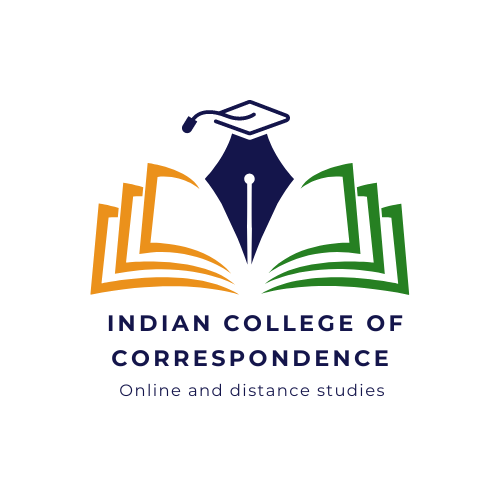In today’s fast-paced world, education pathways are becoming increasingly flexible and diverse. One such pathway that has gained significant traction is the Diploma Lateral Entry. This unique option allows eligible students to directly enter the second year of a diploma program, saving both time and resources. For those pursuing their education through distance education, this route becomes even more advantageous. In this comprehensive guide, we will explore what diploma lateral entry entails, its eligibility criteria, benefits, admission process, and how the Indian College of Correspondence, a leading educational consultancy, can help you navigate this path effectively.
Understanding Diploma Lateral Entry
Diploma Lateral Entry refers to the provision for students to skip the first year of a diploma program and directly enroll in the second year. This is typically offered to candidates who already possess a relevant qualification, such as an Industrial Training Institute (ITI) certification, or those with substantial prior learning or work experience in the same domain.
This system is especially beneficial for working professionals or students who want to expedite their academic journey while leveraging their existing knowledge. Many institutions also offer this mode of study through distance education, making it a highly accessible option for learners across different locations.
Eligibility Criteria for Diploma Lateral Entry
To qualify for a diploma lateral entry program, candidates must meet specific eligibility requirements. These criteria vary depending on the institution and program but generally include the following:
- Educational Qualifications:
- Candidates must have completed their 10th grade or equivalent.
- Alternatively, candidates with a 12th-grade qualification in Science or a related stream can also apply.
- ITI or vocational course graduates are often given direct entry to the second year.
- Work Experience (Optional):
- Some institutions may accept professionals with significant work experience in the relevant field.
- Minimum Marks:
- A minimum percentage (usually 50-60%) in the qualifying examination is required.
- Relevant Field:
- The previous qualification or experience must align with the chosen diploma specialization.
Benefits of Diploma Lateral Entry
- Time Efficiency:
- By skipping the first year, students save one academic year, allowing them to enter the workforce sooner or pursue higher education faster.
- Cost-Effective:
- Reduced course duration translates to lower tuition fees and other expenses, making it an economical choice.
- Skill Enhancement:
- Builds upon the foundational knowledge gained through ITI courses, vocational training, or work experience.
- Career Advancement:
- Equipping candidates with advanced skills and qualifications makes them more competitive in the job market.
- Flexible Learning Through Distance Education:
- For those unable to attend regular classes, distance education provides the flexibility to balance studies with personal and professional commitments.
Popular Fields for Diploma Lateral Entry
Diploma lateral entry programs are available across various fields. Some of the most sought-after domains include:
- Engineering: Mechanical, Civil, Electrical, Computer Science, Electronics, and more.
- Management: Business Administration, Hotel Management, Retail Management.
- Health Sciences: Nursing, Pharmacy, Medical Laboratory Technology.
- Information Technology: Web Development, Software Engineering, Data Science.
- Creative Arts: Fashion Design, Interior Design, Graphic Design.
Distance Education for Diploma Lateral Entry
Distance education has revolutionized the way students can pursue diploma lateral entry programs. By providing learning materials online or through correspondence, students can study at their own pace without the constraints of attending physical classes. Here are some of the advantages:
- Accessibility:
- Students from remote areas or those with work or family responsibilities can access quality education without relocating.
- Flexibility:
- Learners can create their own schedules, allowing them to study while working.
- Cost Savings:
- Reduced commuting and accommodation costs make distance education a more affordable option.
- Diverse Options:
- A wide range of institutions offer diploma lateral entry programs through distance education, increasing choices for students.
The Indian College of Correspondence is a pioneer in providing guidance for such programs, helping students select the best institution and course suited to their needs.
Admission Process for Diploma Lateral Entry
The admission process for diploma lateral entry programs typically involves the following steps:
- Research Institutions:
- Identify colleges or universities offering lateral entry programs in your preferred field. Ensure they are accredited and recognized.
- Application Form:
- Obtain and fill out the application form, either online or offline, depending on the institution.
- Document Submission:
- Submit necessary documents, including mark sheets, certificates (ITI or equivalent), identity proof, and work experience certificates if applicable.
- Entrance Exam (If Applicable):
- Some institutions may conduct an entrance exam to assess the candidate’s knowledge and suitability for the program.
- Counseling and Interview:
- Attend counseling sessions or interviews if required by the institution.
- Fee Payment and Enrollment:
- Pay the requisite fees to secure your admission and begin your educational journey.
Role of Indian College of Correspondence
Choosing the right institution and program can be daunting, especially when navigating through multiple options. This is where the Indian College of Correspondence steps in. As one of the best educational consultancies, they provide:
- Personalized Guidance:
- Expert counselors help students understand their options and choose the best program and institution.
- Admission Assistance:
- From filling out application forms to document verification, they streamline the entire admission process.
- Information on Distance Education:
- With extensive knowledge about distance education providers, they recommend the most suitable programs.
- Ongoing Support:
- The consultancy offers continued support throughout the student’s academic journey, ensuring a smooth experience.
Fees for Diploma Lateral Entry Programs
The fees for diploma lateral entry programs vary based on factors such as the institution, field of study, and mode of learning (regular or distance education). Here is a general breakdown:
- Government Institutions:
- Fees range from INR 10,000 to INR 50,000 per year.
- Private Institutions:
- Fees typically range from INR 50,000 to INR 1,50,000 per year.
- Distance Education Programs:
- These are more affordable, with fees ranging from INR 5,000 to INR 30,000 per year, depending on the course and institution.
The Indian College of Correspondence can help you find cost-effective options while ensuring quality education.
Career Opportunities After Diploma Lateral Entry
Graduates of diploma lateral entry programs have access to a wide range of career opportunities. Depending on the specialization, potential career paths include:
- Engineering Fields:
- Mechanical Engineer, Civil Engineer, Electrical Technician, etc.
- Information Technology:
- Software Developer, IT Support Specialist, Network Administrator.
- Healthcare:
- Lab Technician, Pharmacy Assistant, Nursing Staff.
- Management:
- Retail Manager, Hotel Management Executive, Business Administrator.
- Creative Fields:
- Interior Designer, Graphic Designer, Fashion Designer.
Conclusion
The Diploma Lateral Entry program is an excellent option for students and professionals looking to fast-track their education and career. By leveraging prior qualifications or experience, this pathway offers time and cost savings, skill enhancement, and broader career prospects. With the added flexibility of distance education, it has become more accessible than ever.
For personalized guidance and expert support, the Indian College of Correspondence stands out as the best educational consultancy. From helping you select the right course to ensuring a seamless admission process, their services are designed to set you up for success. Take the next step in your academic journey and unlock your potential with a diploma lateral entry program today!



